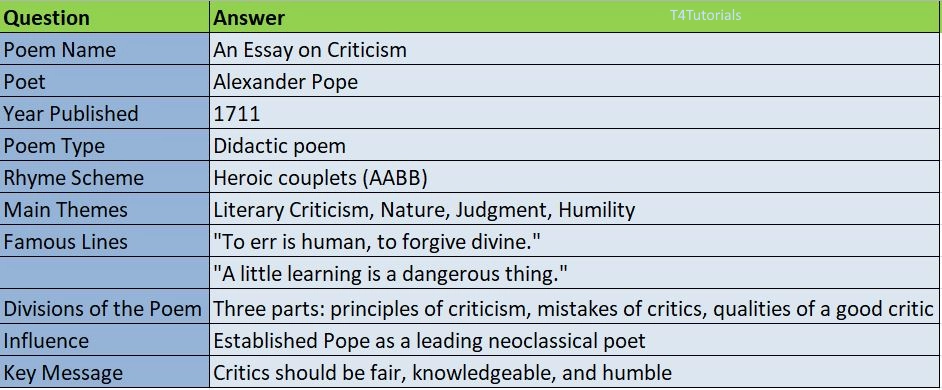Summary:
Alexander Pope’s An Essay on Criticism (1711) is a didactic poem written in heroic couplets that provides guidance on literary criticism and poetic standards. It is divided into three main parts: the principles of criticism, the common mistakes critics make, and the ideal qualities of a good critic.
Pope emphasizes that true critics should possess knowledge, humility, and good taste. He warns against superficial judgment, excessive pride, and blind adherence to classical rules. He argues that critics should appreciate nature as the foundation of artistic beauty and recognize that great poetry follows natural laws. He also criticizes those who judge poetry based on personal bias rather than merit.
The poem is famous for its epigrams and aphorisms, including “To err is human, to forgive divine” and “A little learning is a dangerous thing.” Through this work, Pope establishes himself as a leading neoclassical poet and provides lasting insight into literary criticism.
Score: 0
Attempted: 0/10
Subscribe
|
Question |
Answer |
| Poem Name | An Essay on Criticism |
| Poet | Alexander Pope |
| Year Published | 1711 |
| Poem Type | Didactic poem |
| Rhyme Scheme | Heroic couplets (AABB) |
| Main Themes | Literary Criticism, Nature, Judgment, Humility |
| Famous Lines | “To err is human, to forgive divine.” |
| “A little learning is a dangerous thing.” | |
| Divisions of the Poem | Three parts: principles of criticism, mistakes of critics, qualities of a good critic |
| Influence | Established Pope as a leading neoclassical poet |
| Key Message | Critics should be fair, knowledgeable, and humble |
